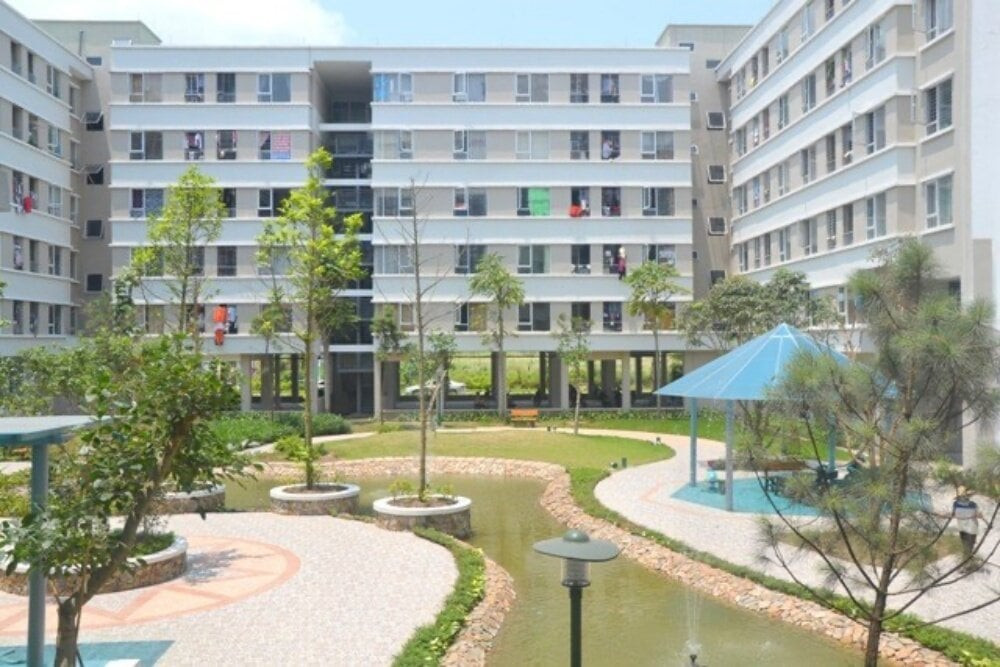Experts expect increased supply to quench the "thirst" for social housing, thereby reducing housing prices.

Recently, the Hanoi Department of Planning and Architecture proposed to build 9 new concentrated social housing areas, with a scale of 668 hectares in suburban districts.
In addition, according to the plan until 2025, Hanoi has approved the development of 5 social housing areas with a scale of 248 hectares. To date, the Department of Construction has completed the investment proposal documents for 4 projects. These projects are being appraised by the Department of Planning and Investment. The 4 projects have an area of 203 hectares, about 12,300 social housing units. Of which, Dong Anh and Me Linh districts have 3 projects with 9,800 units, Gia Lam district has one project with 2,400 apartments.
Thus, in the coming time, the supply of social housing in Hanoi will be more abundant than at present.
Mr. Le Bao Long, Strategic Director of PropertyGuru Vietnam, analyzed: the new law on social housing will add two more forms of social housing development including foreign capital/foreign organizations and trade union financial resources for workers to rent social housing.
Investors are allowed to reserve up to 20% of the infrastructure area for business, enjoy all profits and are exempted from land use/rental fees, and do not have to carry out procedures to determine prices and request exemptions.
"New regulations, preferential policies and support will help improve the expected supply of social housing," Mr. Long commented.
According to Mr. Nguyen Van Dinh, Chairman of the Vietnam Real Estate Brokers Association, the newly-approved Housing Law (amended) by the National Assembly will play an important role in promoting the supply of social housing. The new points in these laws contribute to resolving the difficulties that the market has faced in recent times, including "bottlenecks" in social housing.
Specifically, the new Housing Law stipulates that enterprises oriented towards developing social housing will receive many incentives with more open mechanisms. 20% of the land fund for social housing development will be under the planning responsibility of each locality, based on which localities will have housing development policies and allocate truly suitable land funds.
The 2023 Housing Law also adds regulations assigning the responsibility of the Provincial People's Committee to arrange sufficient land fund for social housing development.
It is worth mentioning that investors participating in the development of social housing will be exempted from paying taxes on the entire area of social housing construction without having to carry out procedures for determining land prices and procedures for requesting exemption. In addition, the State will only apply the profit margin on the area of social housing construction, which is also considered a plus point to increase investment attraction.
Housing prices will decrease
According to the Vietnam Association of Realtors, from the end of 2023, apartment prices in Hanoi will increase sharply not only in new projects but also in used projects. Currently, apartment prices in Hanoi have increased by about 38% compared to 2019.
Therefore, one of the ways to improve the selling price of apartments is to improve the market supply. In which, the development of social housing with low prices will help reduce the average selling price of apartments.
Mr. Nguyen Van Dinh predicts that when the supply of social housing increases, apartment prices will drop to a level more suitable for people with real housing needs.
Sharing the same view, according to Mr. Nguyen Anh Que, Chairman of G6 Group, current housing prices are quite high, but if social housing and low-cost housing are abundant, the price level will be pulled down.
In the past, in the period 2008 - 2010, there were apartment projects priced at 50 - 70 million VND/m2. However, in 2011 - 2013, when the market saw the appearance of low-cost commercial housing projects and social housing projects, averaging at 11 - 15 million VND/m2, apartment prices on the market immediately cooled down.
For example, in 2010, the Indochina Plaza apartment project on Xuan Thuy Street (Cau Giay, Hanoi) had an average selling price of 50-60 million VND/m2. But by 2013, when supply increased, the price of many apartments in this area was only 30-35 million VND/m2.
With the actual developments, Mr. Que commented that if the old scenario repeats, housing prices may decrease from 2026. The reason is that housing projects in general and social housing projects in particular will begin to complete procedures, increasing supply in about 1 year later, helping to cool down housing prices.
TH (according to VTC News)